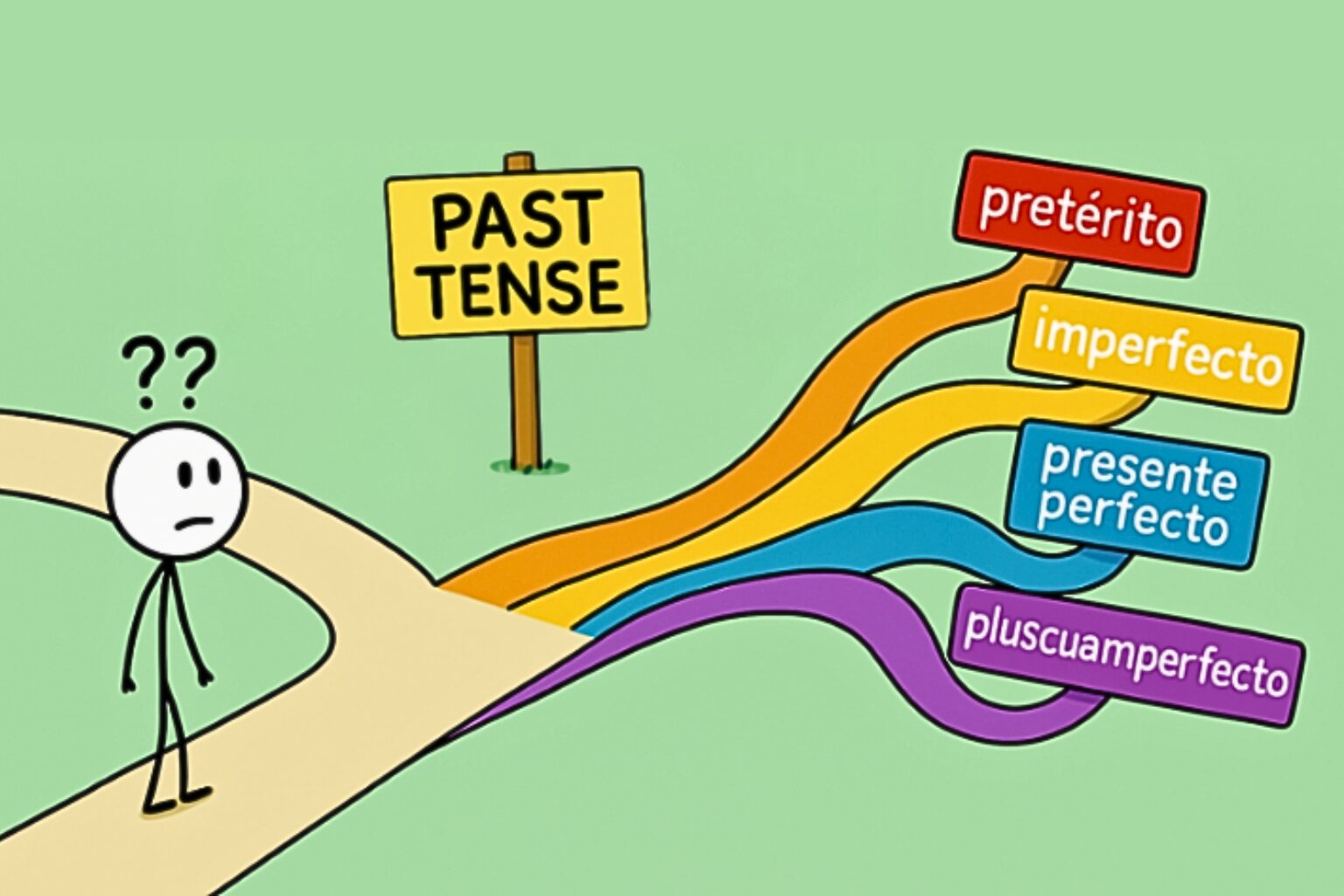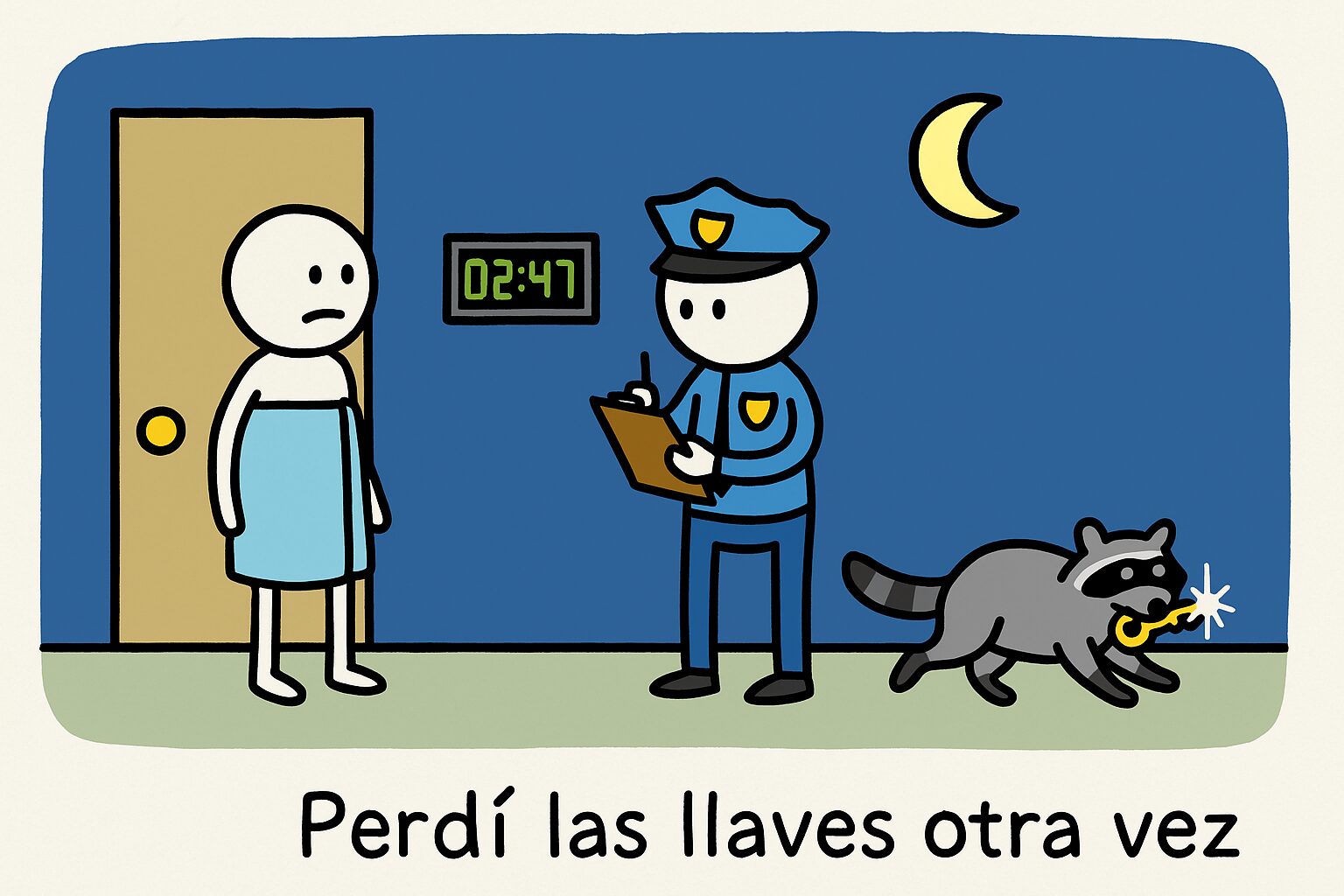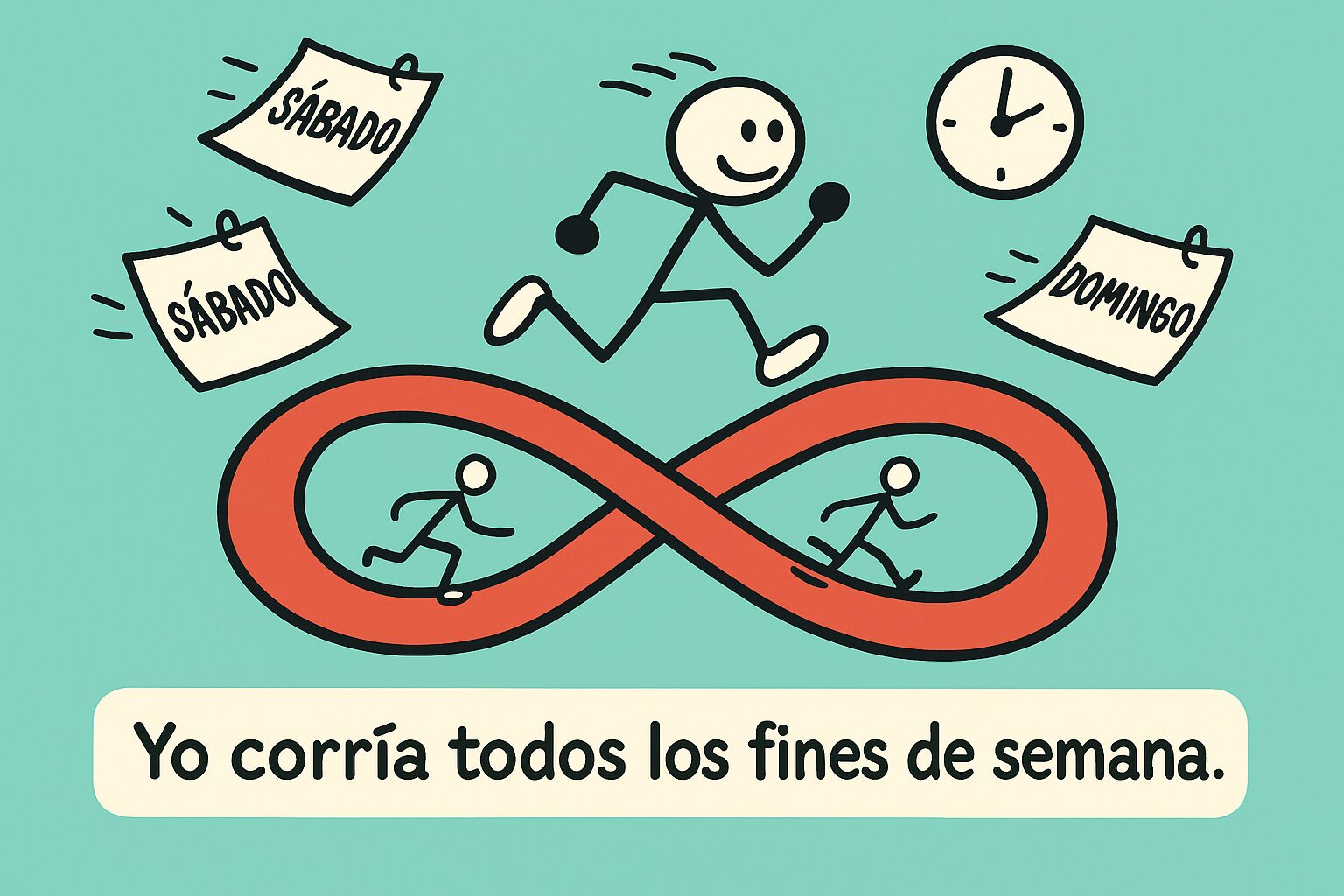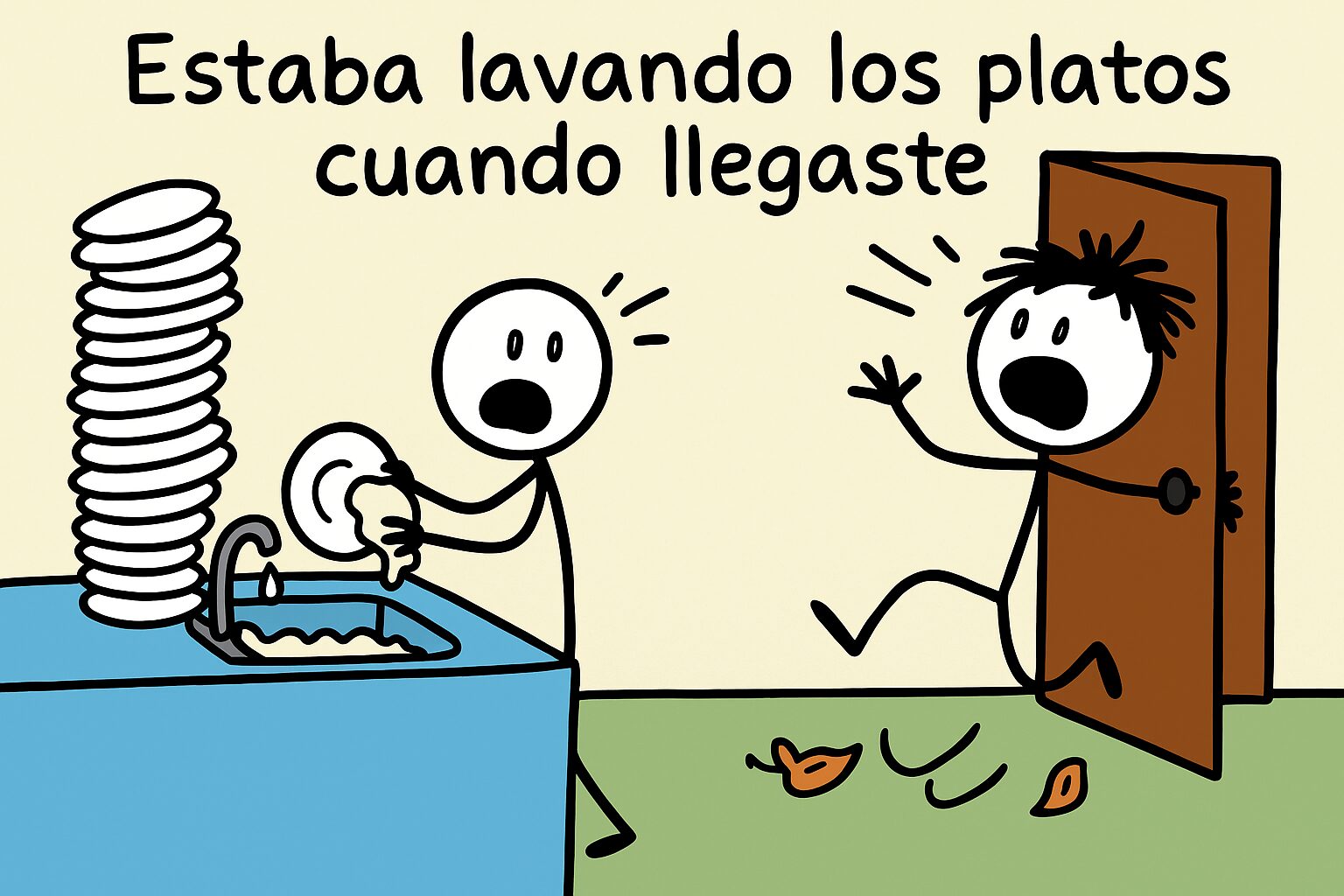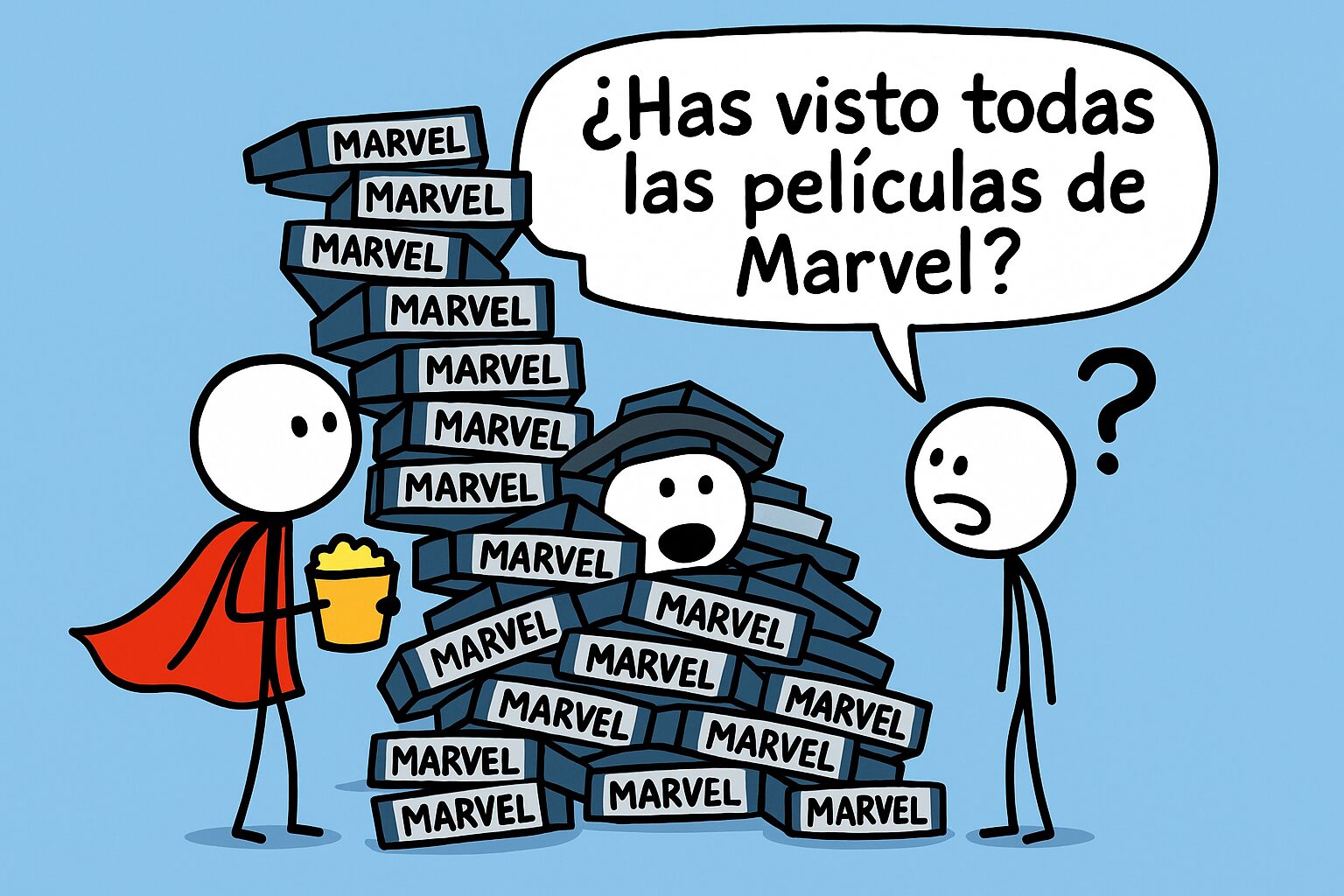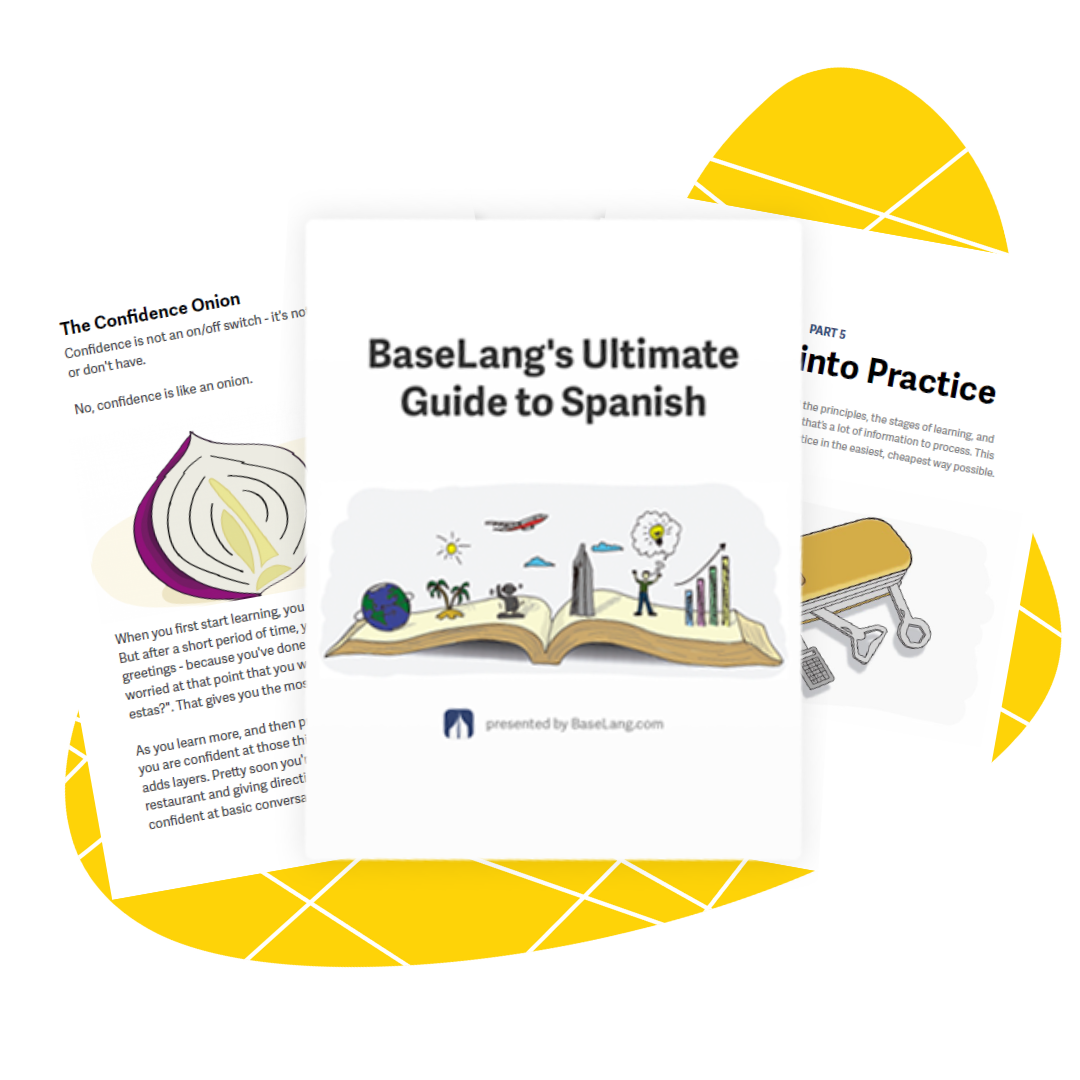Past Tense Spanish: The Only Beginner’s Guide You Need
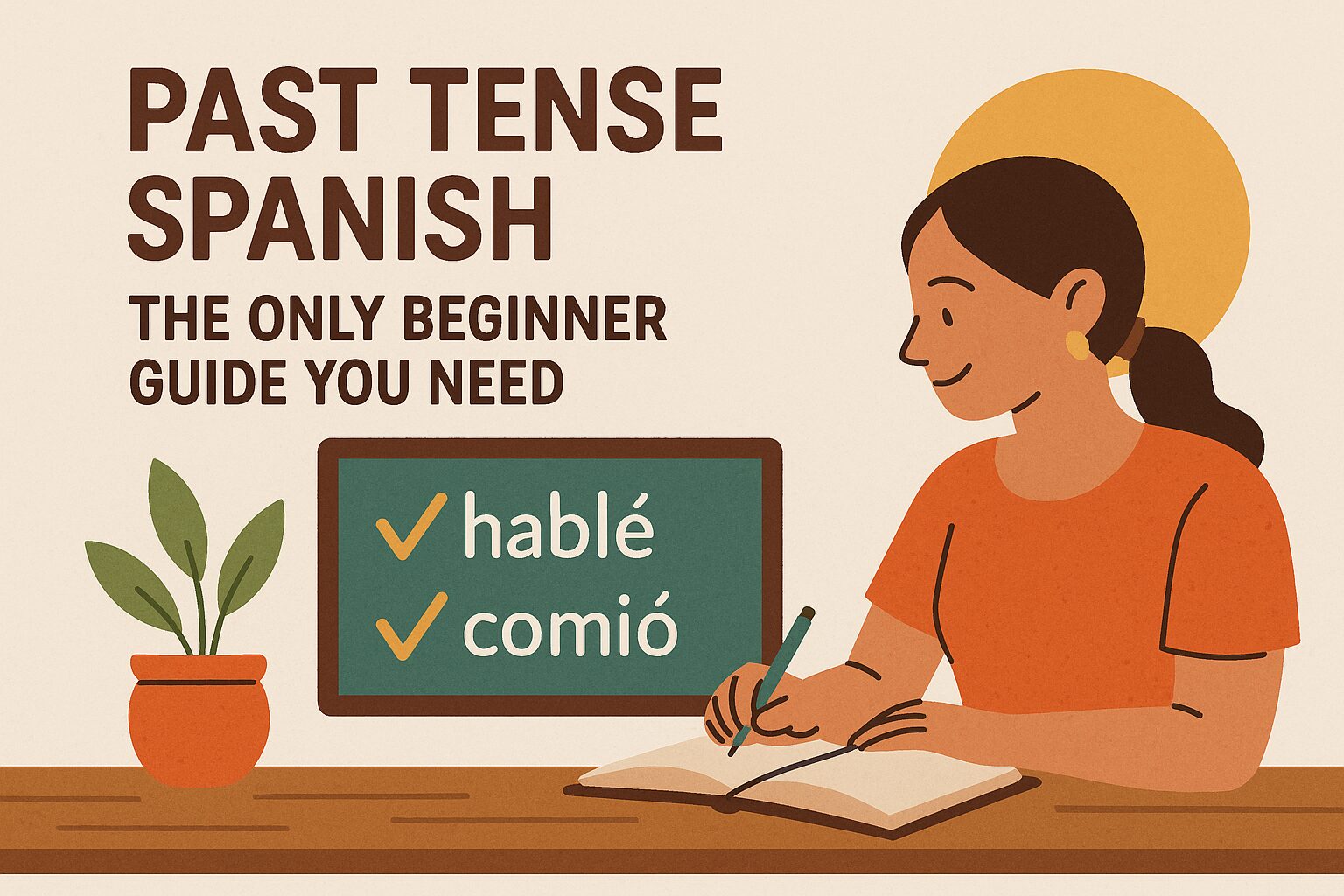
Get our free email course, Shortcut to Conversational.
Have conversations faster, understand people when they speak fast, and other tested tips to learn faster.
More infoSpanish past tenses can feel like a labyrinth at first glance. Many forms, tricky conjugations, and the preterite versus imperfect dilemma can cause confusion. This article offers the ultimate guide to past tense Spanish. We’ll show you how to start using each tense immediately, even if you’re a beginner.
What Is the Past Tense in Spanish?
In Spanish, the past tense describes actions, states, or events that happened before the present moment.
English uses words like “did” and “had” to talk about the past. Spanish, on the other hand, has different ways to show past actions with several special forms.
Each of these tenses shows something different about when an action took place. It can tell if the action is finished, how long it lasted, or how it connects to other past events.
How Many Past Tenses Are There in Spanish?
In Spanish, there are five different tenses used to speak about the past.
Let’s see an example of each one in action:
| Past Tense | Spanish example | English example | Use case |
|---|---|---|---|
| Simple past | Ayer jugué con mi perro. | I played with my dog yesterday. | Completed action at a specific time |
| Imperfect | Jugaba con mi perro. | I used to play with my dog. | Habitual or ongoing past actions |
| Past progressive | Estaba jugando con mi perro. | I was playing with my dog. | Action in progress in the past |
| Present perfect | He jugado con mi perro. | I have played with my dog. | Past action connected to the present |
| Past perfect | Había jugado con mi perro. | I had played with my dog. | Action completed before another past action |
- Simple past: Describes a completed action that happened at a specific time in the past. It’s used when the action has a clear beginning and end.
- Imperfect past tense: Used for habitual or repeated actions in the past, or to describe ongoing situations without focusing on when they started or ended.
- Past progressive: Highlights an action that was in progress at a certain point in the past, often interrupted by another event.
- Present perfect: Refers to actions that happened at an unspecified time in the past but are still relevant to or connected with the present.
- Past perfect: Indicates that one action was completed before another past action occurred. It sets up a “past-before-past” sequence.
As you can see, most Spanish past tense words are similar to English ones. When you compare them side-by-side, they are easier to understand.
I say “most” because the imperfect past tense lacks an English counterpart.
Yes, the imperfect past tense can be translated into English in different forms. For example, “comía muchos caramelos” could be translated as “I used to eat a lot of candy“, or it could be translated as “I was eating a lot of candy”.
If you find this point slightly confusing, don’t worry! We’ll cover all five tenses in greater detail so that you can start using them right away.
1. Spanish Simple Past (Spanish preterite or pasado simple)
The simple past tense is used to talk about past actions that were already completed, with clear beginnings or endings.
For example, you could use the simple past tense to say:
- I did the exam last summer – Hice el examen el verano pasado
- I visited my grandparents – Yo visité a mis abuelos
In other words, these actions took place on a specific day or time.
Let’s look at more examples of the simple past tense in action.
- I studied the whole night – Estudié toda la noche
- We sold our house last month – Vendimos nuestra casa el mes pasado
- We ate pizza last night – Anoche comimos pizza
- I lost the keys again – Perdí las llaves otra vez
- France won the World Cup – Francia ganó la Copa Mundial de Fútbol
If the action was something habitual, like “I studied every day of the week”, then we would need to use the imperfect past tense as the sentence implies that the past action took place regularly over a period of time. We’ll cover this next.
2. Imperfect Spanish Past Tense (Imperfect Preterite or imperfecto)
The imperfect past tense is a point of confusion for many people learning Spanish.
In general, the tense is used:
- To speak about past actions that were habitual
- To speak about an ongoing past action that was interrupted
- To describe past characteristics (age, height, etc)
- To describe past conditions
- To describe past feelings
In other words, this tense is key to setting the stage, and telling stories in Spanish.
This tense is used when it is unclear whether the action was completed or not.
For example, if you talk about visiting your grandparents and use the simple past tense, then this indicates that you are speaking about a specific point in time when the visit happened.
- When I visited my grandparents – Cuando yo visité a mis abuelos
If you use the imperfect past tense, then you’re indicating that this was a habitual action, and you’re not specifying a start or end point.
- When I used to visit my grandparents – Cuando yo visitaba a mis abuelos
Let’s take a look at more examples:
- I used to run every weekend – Yo corría todos los fines de semana
- Raquel used to dance samba in an academy – Raquel bailaba samba en una academia
In the above examples, the actions don’t have a specific start or end point, but we know that they were habitual.
As we have already mentioned, this tense is also used to discuss dates, time, age, conditions, and feelings.
- When you were 10 years old, we moved away from Brazil – Cuando tenías 10 años, nos mudamos de Brasil.
- It was September when we went to Italy – Era septiembre cuando fuimos a Italia.
- When I was a kid, I used to go to the lake with my cousins and some friends – Cuando era niño, iba al lago con mis primos y algunos amigos
- I felt happy with my boyfriend – Me sentía feliz con mi novio.
And finally, this tense is often used to speak about a past action that was in progress, before it was interrupted by something else.
- I was sleeping when the phone rang – Dormía cuando el teléfono sonó.
In the last example, the imperfect past tense translates as “I was sleeping”, instead of “I used to sleep”.
That’s because in Spanish, we can use both the imperfect past tense and the past progressive to talk about a past action that was ongoing.
As native speakers, we tend to use the past progressive to indicate a more recent time frame.
In English, it translates the same way.
- I was sleeping when the phone rang – Yo estaba durmiendo cuando el teléfono sonó.
And this brings us nicely onto the next section.
3. Past Progressive Spanish (pasado progresivo)
The past progressive tense is a simple way to speak about a continuous action that took place in the past, generally within a more recent time frame.
This “-ing” tense is used in the exact same way that we use the English equivalent every day
- I was working
- She was eating
- They were arriving
If you already know how to use the present progressive, then this tense will be simple for you.
In the present progressive, we use a simple formula:
Subject + ESTAR verb (present) + Progressive verb
- I’m working – Estoy trabajando
The past progressive formula is almost identical, only this time we must conjugate “estar” in the imperfect past tense:
Subject + ESTAR verb (imperfect past tense) + Progressive verb
- I was working – Estaba trabajando
Something we already touched on is knowing when to use past progressive vs the imperfect past tense.
The truth is, in many cases, the tenses are interchangeable.
- Past progressive is often used when the action is more recent (i.e., something just happened)
- Imperfect past tense is more often used when giving descriptions or telling stories and indicates that the action was a long time ago.
That said, knowing which tense to use is something that will become second nature to you once you’re exposed to more Spanish.
For now, let’s look at more examples of the past progressive:
- I was working at the office – Estaba trabajando en la oficina
- You were eating an ice cream – Estabas comiendo un helado
- We were running a while – Estabamos corriendo un rato
- They were doing homework – Estaban haciendo la tarea
Once again, this tense (like the imperfect past tense) is an easy way to talk about interrupted past actions.
- I was doing the dishes when you arrived – Estaba lavando los platos cuando llegaste
- I was watching TV but I fell asleep – Estaba viendo televisión pero me quedé dormido
- We were working out when your sister called – Estábamos haciendo ejercicio cuando tu hermana llamó
Note: You’ll notice that the above examples contain a common structure: past progressive to describe the action that was in progress, and simple past to describe the action that caused the interruption.
4. Spanish Present Perfect (presente perfecto)
This tense is used in the exact same way that we use the English equivalent.
We use the present perfect tense to talk about past actions that are still connected to the present, or probably still happening.
- I have gone to Spain many times – He ido a España muchas veces
- They have done all their homework – Ellos han hecho todas sus tareas
- I have visited my cousins – He visitado a mis primos
To use this tense, all you need to do is remember the following formula:
Auxiliary verb “haber” in simple present + past participle of the action verb.
- We have lived in Latin America for a few years – Hemos vivido en América Latina por algunos años
- Have you seen all the Marvel movies? – ¿Has visto todas las películas de Marvel?
- I have bought a new car for you – He comprado un carro nuevo para ti
If you ever visit Latin America, you might notice that native speakers often prefer the simple past tense instead of the present perfect when talking about recent actions.
For them, simple past tense is a less formal way to speak among friends and family.
5. Spanish Past Perfect (pluscuamperfecto del indicativo)
Even I can admit that the name of this tense looks daunting when written down in Spanish:
Pluscuamperfecto del indicativo 😱
Fortunately, it’s quite simple to understand, and also has an English equivalent.
The past perfect Spanish tense is normally used when talking about an action that took place before something else happened in the past.
Let’s see how this tense works with some examples:
- They had done a good job before they left – Habían hecho un buen trabajo antes de irse
- We had taken many pictures but we lost the memory card – Habíamos tomado muchas fotos pero perdimos la memoria
- I had slept a bit before running – Yo había dormido un poco antes de ir a correr
To use this tense, you need to follow a formula similar to the one we covered in the last section, only this time, the verb “haber” will be conjugated in the imperfect tense.
Auxiliary verb “haber” in the imperfect tense + past participle of the action verb
Here are some examples:
- I had written some articles for the magazine – Yo había escrito algunos artículos para la revista
- You had prepared the meal for all of us before going out – Habías hecho la cena para todos nosotros antes de salir
- The students had read that book already – Los estudiantes ya habían leído ese libro
Conclusion
Hopefully, you can now distinguish the differences between all five tenses and how they are used to speak about the past. To sum up:
- The simple past tense is used for actions that are finished and happened at a certain time.
- The imperfect tense is for actions we do often or that were happening in the past, and for descriptions.
- The past progressive tense is for actions that were in progress at a certain time in the past.
- The present perfect tense is for actions that happened in the past but are related to now.
- The past perfect tense is for actions that finished before another past action.
To put your knowledge into practice, try the exercises below.
Good luck!
Spanish Past Tense Practice
Try the exercises below once you know how to conjugate each tense.
Simple past
- Trabajar: Yo ____________ esta mañana.
- Jugar: Los niños ____________ en el parque la semana pasada.
- Dormir: Ella _______________ toda la noche sin problemas.
- Enviar: Te ____________ una carta el mes pasado
- Leer: Anoche _____________ el último capítulo del libro que me recomendaste.
Imperfect Past
- Pensar: (Yo) ___________ en ti todos los días.
- Comer: Cuando (Él) era joven ____________ mucha comida chatarra.
- Nadar: Mis hermanos y yo ______________ en el lago en vacaciones.
- Ver: (Tú) ______________ las caricaturas todas todas las tardes.
- Tener: En vacaciones (Yo) __________________ mucho tiempo libre.
Past Progressive
(see here for a full explanation of past progressive)
- Cocinar: (Tú) _____________________ para ella.
- Pintar: Ellos _____________________ la casa de su abuela.
- Arreglar: (Yo) _____________________ el carro de mi hermano.
- Caminar: Nosotros _________________ en el parque cuando el perro escapó
- Hacer ¿Qué (Ustedes) _________________________?
Present Perfect
(see here for a full explanation of present perfect Spanish)
- Regalar: (Yo) te ___________________________ un viaje a París.
- Terminar: (Nosotros) ________________________ todas nuestras tareas.
- Limpiar: (Ella) _____________________ toda la casa.
- Pagar: Finalmente (Tú) _____________________ la hipoteca.
- Estar: (Ellas) __________________________ esperando por ti toda la noche.
Past Perfect
- Ser: (Él) ________________________ un buen profesor antes de jubilarse.
- Soñar: Ella _____________________ con eso toda la vida.
- Extrañar: (Ustedes) __________________ a sus familias durante el viaje.
- Pensar: Nosotros ________________________ algo completamente diferente.
- Perfeccionar: (Ellos) ______________________ la técnica antes de las competencias.
Answers
Simple past
- Yo trabajé esta mañana.
- Los niños jugaron en el parque la semana pasada.
- Ella durmió toda la noche sin problemas.
- Te envié una carta el mes pasado.
- Anoche leí el último capítulo del libro que me recomendaste .
Imperfect Past
- Pensaba en ti todos los días.
- Cuando era joven, comía mucha comida chatarra.
- Mis hermanos y yo nadábamos en el lago en vacaciones.
- Veías las caricaturas todas las tardes.
- En vacaciones tenía mucho tiempo libre.
Past Progressive
- Estabas cocinando para ella.
- Ellos estaban pintando la casa de su abuela.
- Estaba arreglando el carro de mi hermano.
- Nosotros estábamos caminando en el parque cuando el perro escapó.
- ¿Qué estaban haciendo?
Present perfect
- Te he regalado un viaje a París.
- Hemos terminado todas nuestras tareas.
- Ha limpiado toda la casa.
- Finalmente has pagado la hipoteca.
- Han estado esperando por ti toda la noche.
Past Perfect
- Había sido un buen profesor antes de jubilarse.
- Ella había soñado con eso toda la vida.
- Habían extrañado a sus familias durante el viaje.
- Nosotros habíamos pensado en algo completamente diferente.
- Habían perfeccionado la técnica antes de las competencias.
